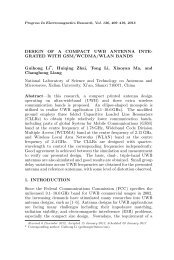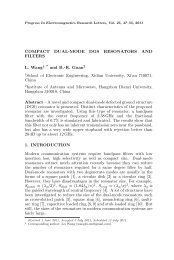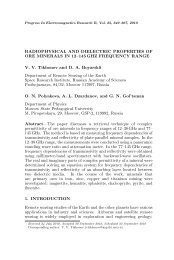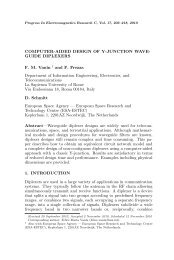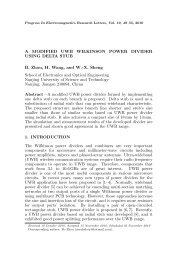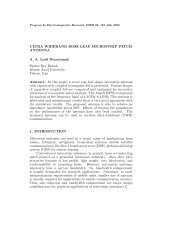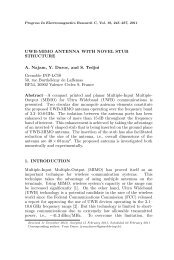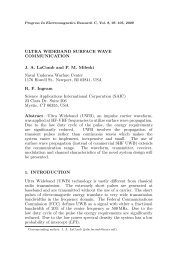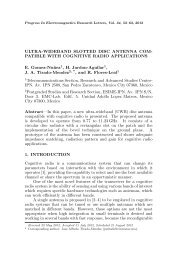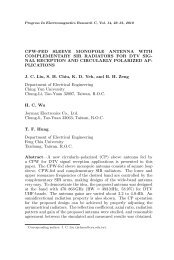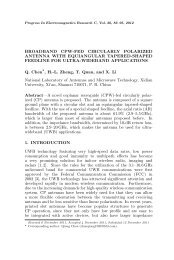PDF File (979 KB) - PIER
PDF File (979 KB) - PIER
PDF File (979 KB) - PIER
Create successful ePaper yourself
Turn your PDF publications into a flip-book with our unique Google optimized e-Paper software.
110 Angermann and Yatsyk<br />
The solution of the latter system is approximated numerically by the<br />
help of a quadrature method. The numerical algorithms of the solution<br />
of the nonlinear problems are based on iterative procedures which<br />
require the solution of a linear system in each step. The analytical<br />
continuation of these linear problems into the region of complex values<br />
of the frequency parameter allows us to switch to the investigation of<br />
spectral problems.<br />
Some results of calculations of characteristics of the scattered<br />
field of a plane wave are presented, taking into account the third<br />
harmonic generated by nonlinear cubically polarisable layers with both<br />
negative as well as positive values of the cubic susceptibility of the<br />
medium. We show that layers with negative and positive values of<br />
the coefficient of cubic susceptibility of the nonlinear medium have<br />
fundamentally different scattering and generation properties in the<br />
domain of resonance. In the case of negative/positive values of the<br />
susceptibility, a decanalisation/canalisation of the electromagnetic field<br />
can be observed.<br />
The paper is organized as follows: In the subsequent section, we<br />
introduce the mathematical model. Then, in Section 3, we describe<br />
the basic elements of the numerical method. The main part is formed<br />
by Section 4, where we discuss the results of numerical simulations of<br />
single-layered structures with both negative (Subsection 4.1) as well as<br />
positive (Subsection 4.2) values of the cubic susceptibility.<br />
2. WAVE PROPAGATION IN NONLINEAR MEDIA<br />
WITH CUBIC POLARISABILITY<br />
We consider nonlinear media which are located in the region<br />
{<br />
}<br />
r = (x, y, z) ⊤ ∈ R 3 : |z| ≤ 2πδ ,<br />
δ > 0 (cf. Figure 1), such that the vector of the polarisation moment<br />
P can be expanded as P = χ (1) E + (χ (2) E)E + ((χ (3) E)E)E + . . .,<br />
where χ (1) , χ (2) , χ (3) are the media susceptibility tensors. In the case<br />
of isotropic media, the quadratic term disappears.<br />
Figure 1. The nonlinear dielectric layered structure.




